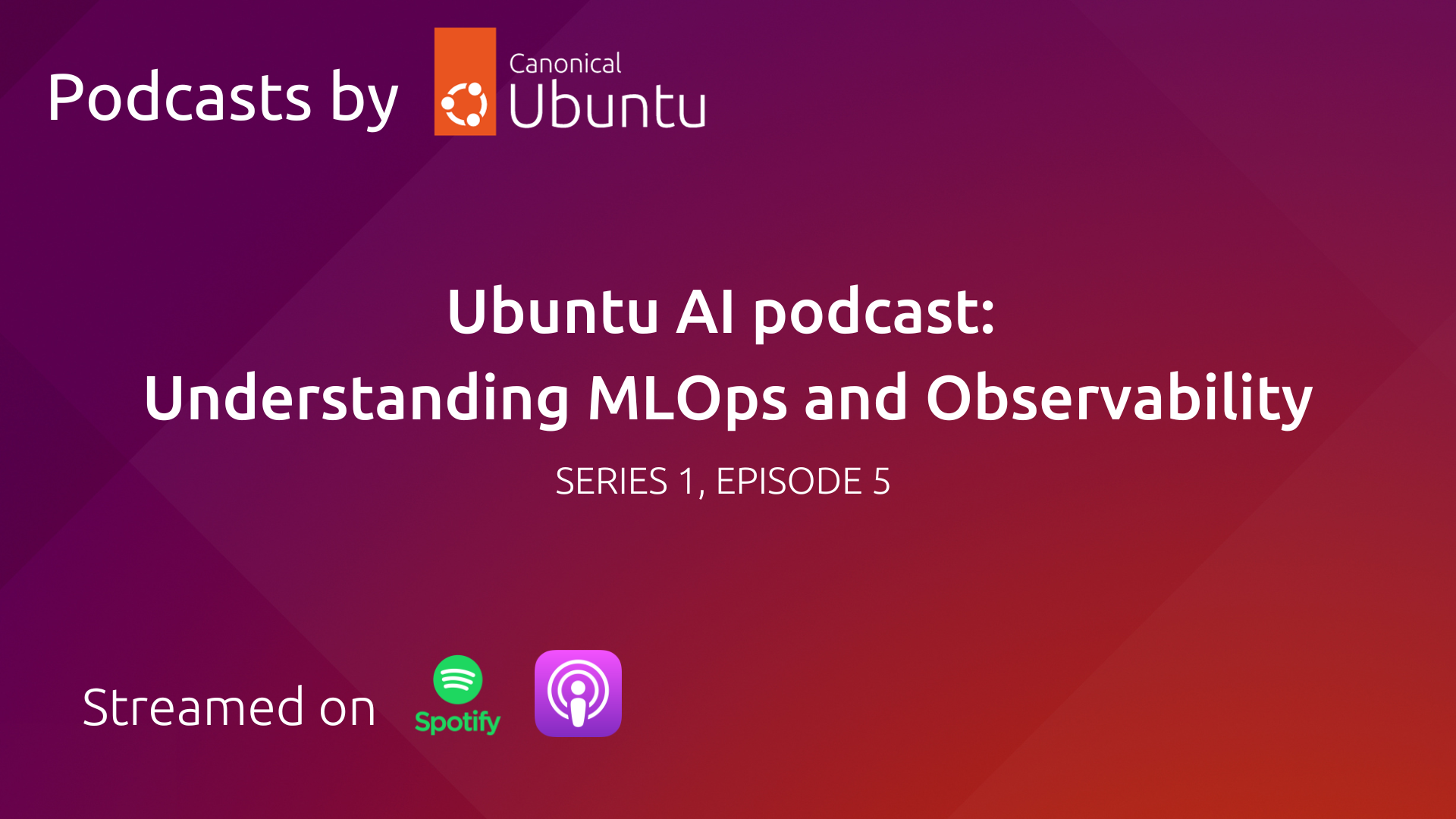
The podcast
Welcome to Ubuntu AI podcast! From fun experiments to enterprise projects, AI became the center of attention when it comes to innovation, digital transformation and optimisatation.
Open source technologies democratised access to state of the art machine learning tools and opened doors for everyone ready to embark on their AI journey.
Ubuntu AI will be your guide in the industry where community of like-minded people meet, to make an impact.
In this episode we’re talking about observability in MLOps
When we think of observability, we talk about alerts, dashboards, logs, things that are helping people know better what’s happening with their system. Is it correct?
People used to talk about the three pillars of observability. I kind of don’t agree with that way of looking at it. But it’s, it’s basically in its simplest form, it’s logs, metrics and traces.
What are your thoughts on why is it important to monitor your MLOps stack and also your MLOps work is not just the stack itself, right?
So there are two different main types of monitoring that you have in such systems. One is the infrastructure itself. That would be the standard stuff that Azeris are doing because MlOps Stack is just yet another compute workload. It’s still operates on top of some Kubernetes cluster or on top of a public cloud. There are jobs, functions, containers running and you need to do basic observability for all of those.
However, there is also additional layer of observability that is more business centric and centred around what mlops pipeline is doing and what its actual use. So basically monitoring the data that is flowing through the entire system, checking for data drifts, checking for changes for like missing data or any kind of anomaly detection and patterns that are changing and we don’t expect them to change are important to be flagged as alerts in this kind of setup because you don’t want to run the model on production, which is fed no data for a long time or this kind of issues.
And also since we are going to the models, the models themselves, they also can have things like model drift or even an API of a model is not accessible.
Listen to the full episode in all major podcast streaming platforms. Subscribe to our channels to be among the first listeners of the podcasts by Canonical.
